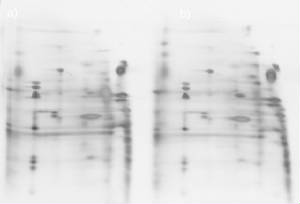|
Functional mitochondria is required to exert the life-span extension to calorie restricted Sacchromyces cerevisiae
Pravin K. Sharma and Nilanjan Roy
Calorie restriction (CR) is the only proven regimen which bestows quality of life benefits across the various phyla right
from unicellular organisms like yeast to primates. In previous study we have shown that CR increases oxidative stress and
augments ROS defence[1]. In a bid to elucidate the mechanism of CR, studies were undertaken on the isolated mitochondria.
Calorie restriction led to increased respiration in mitochondria but the ATP generation remained unaffected. ROS levels were
elevated, along with mitochondrial antioxidant defence system and complex III was found to be the major source of ROS generation.
Moreover, we have also found that functional mitochondrial electron transport chain is vital for this string of events and
ultimately ensuing life span extension. We summon the principle of “Hormesis” to explain the observations of our
study. Hormesis is defined as the beneficial effects exhibited by a cell or an organism when it is exposed to a low intensity
stressor. Calorie restriction leads to a condition of mild stress which in turn enhances vitality. Results of our study provide
compelling evidence to explore the role of mitochondria in life span regulation further.
1. S. Agarwal, S. Sharma, V. Agarwal and N. Roy (2005) Caloric Restriction Augments ROS Defense in S. cerevisiae, by a Sir2p
Independent Mechanism Free Radical Research 39:55-62
Proteomic analysis of caloric restricted mitochondrial respirosomes
Nitish Mittal and Nilanjan Roy
It has been observed previously that complexes of mitochondrial respiratory chain are not randomly distributed within the
inner mitochondrial membrane, but assembled into supramolecular structures called respirosome. Composition of respirosomes
alters with the metabolic status of the cells. In this study we are trying to isolate supramolecular structure of mitochondrial
oxidative phosphorelation (OXPHOS) chain by blue native PAGE (BN-PAGE) and analyze the effect of caloric restriction if any.

2D BN-PAGE gel of isolated mitochondria from calorie restricted (a) and normal (b) cells
Regulation of scavenging enzymes in cerebral ischemic reperfusion injury: a proteomic approach
Stroke is a third leading cause of death globally and the first major cause of disability. The treatment options are limited
to supportive care, no current approved therapy for reduction of stroke size or neurological disability is available. In cerebral
ischemia, administration of thrombolytic agent leads to reperfusion. Reperfusion provides oxygen to numerous enzymatic oxidation
reactions that produce reactive oxygen species (ROS). Human brain expresses inadequate amount of scavenging enzymes, therefore
reperfusion cause extensive oxidative damage. One strategy for protecting brain from reperfusion injury could be genetic augmentation
of cellular defense against ROS.
The goal of this project is to utilize yeast knowledge and proteomics to dissect pathways regulating ROS scavenging enzymes
in brain. This study may reveal key regulators and provide targets for therapeutic interventions to augment defense against
ROS and protect brain from reperfusion injury
|
